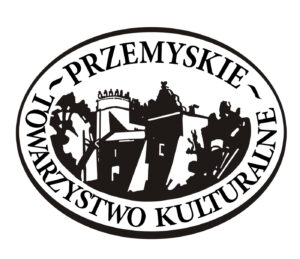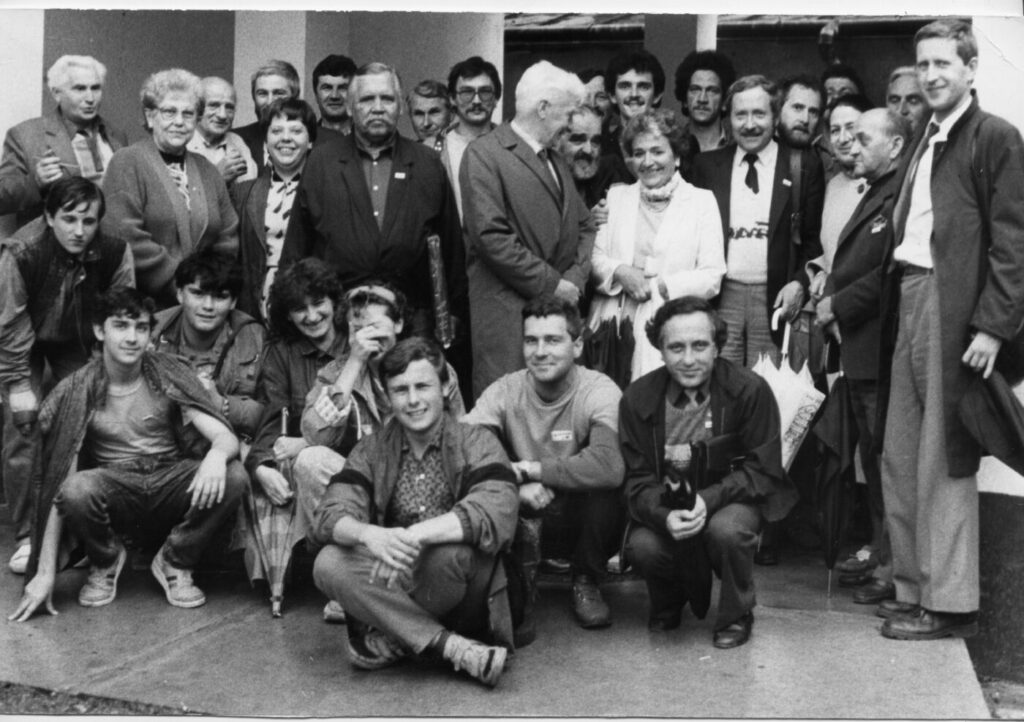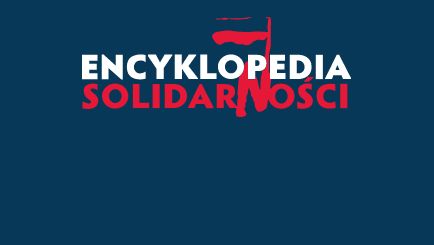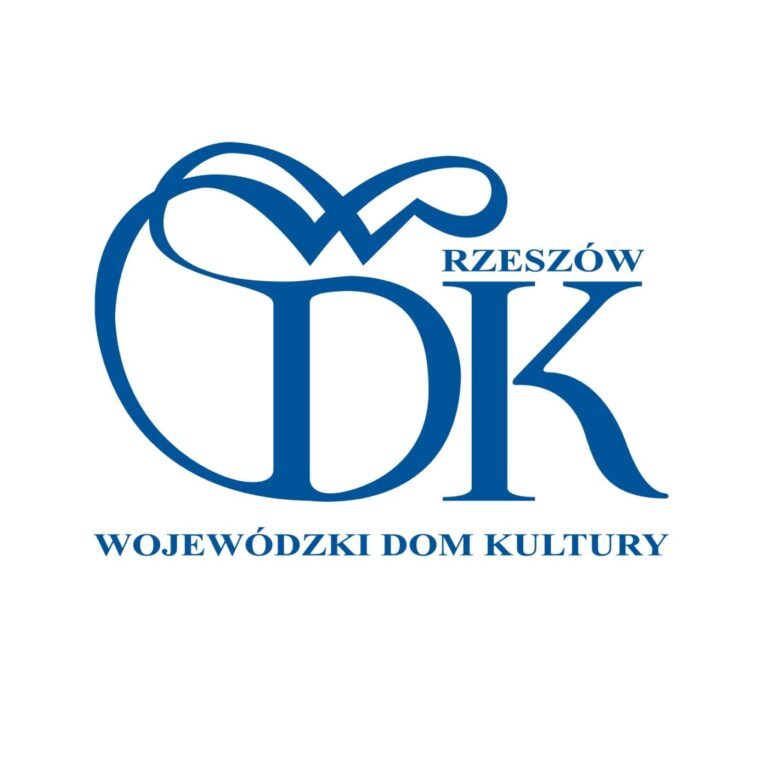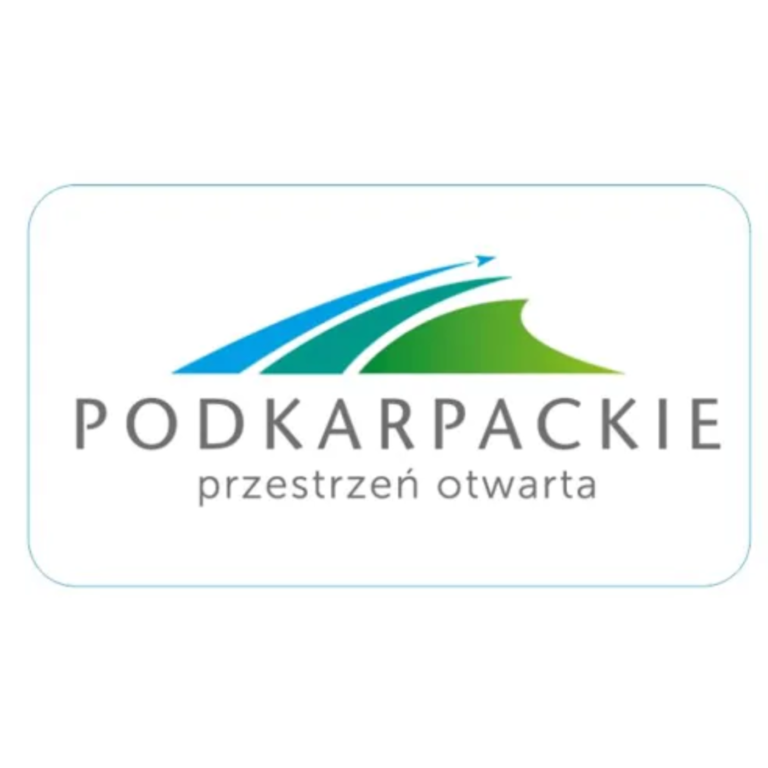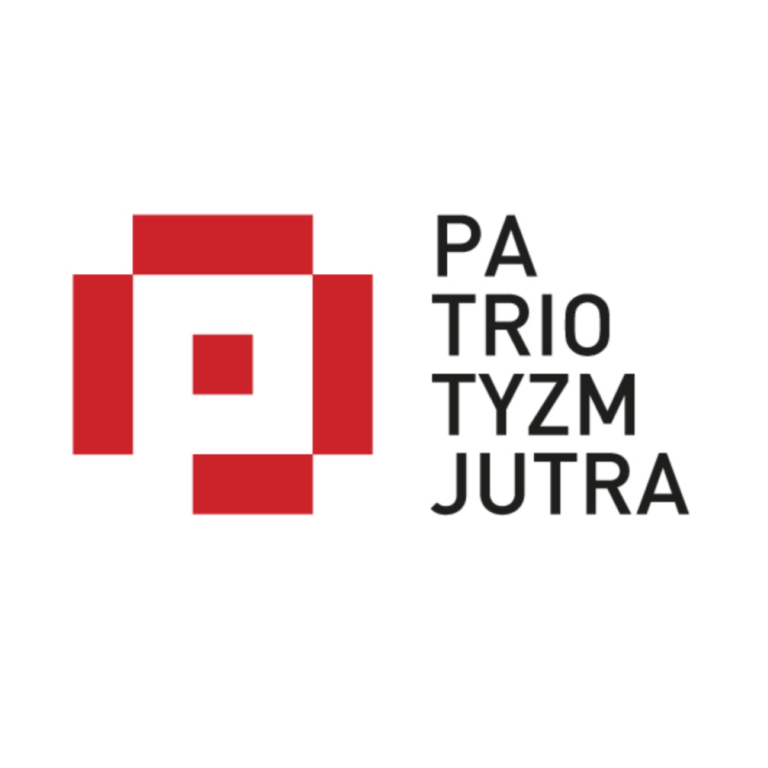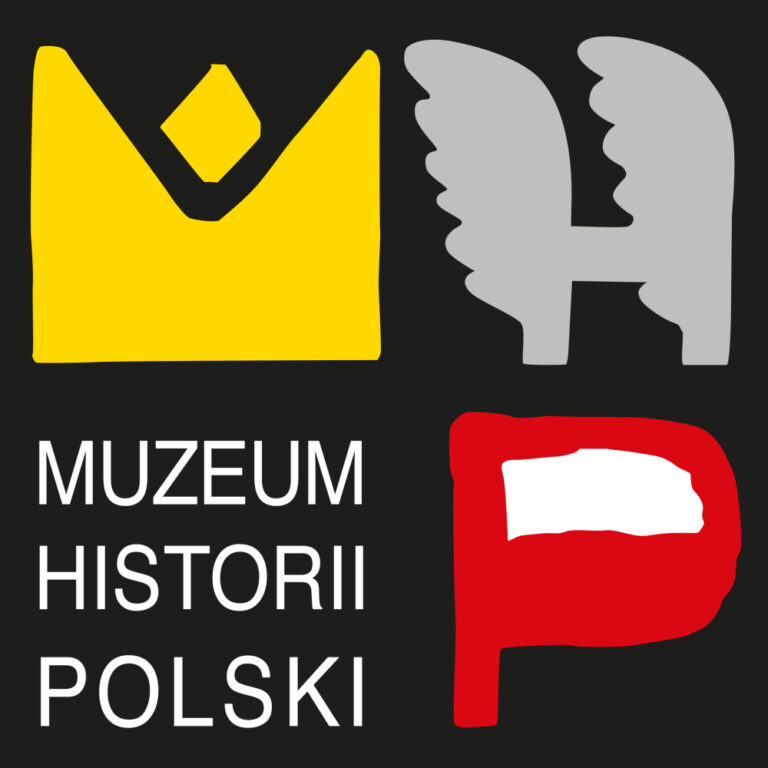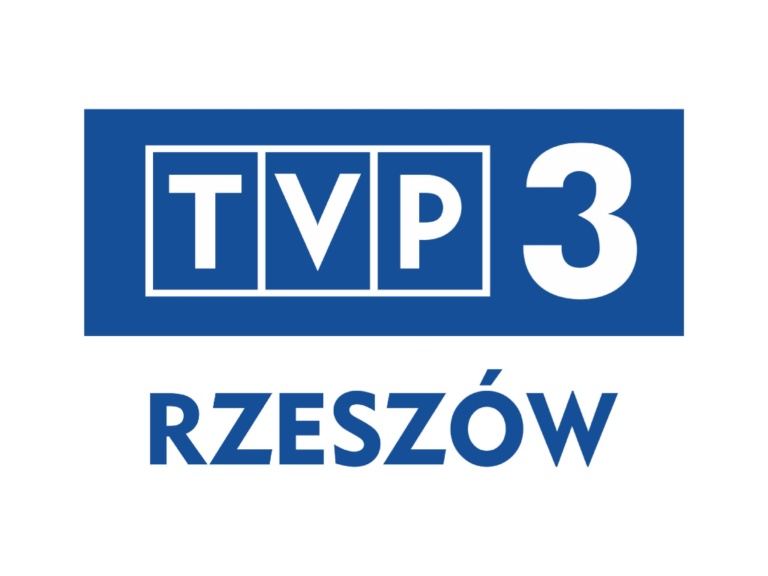FROM THE ENCYCLOPEDIA OF SOLIDARITY IPN
Jan Draus, born on March 25, 1952 in Kolbuszowa. Graduate of the Jagiellonian University in Cracow, Faculty of Philosophy and History (1976), Ph.D. (1980), habilitation (1994),
https://encysol.pl/es/encyklopedia/biogramy/15651,Draus-Jan.html?search=26579
JAN DRAUS
A postwar portrait of opposition Przemyśl
Modern Przemysl is one of the uncommon cities of the Republic, not only because in the post-Stalin reality it realistically symbolizes and reminds its contemporaries of the southeastern Borderlands, to which it has always belonged, but also because for centuries it has carried a considerable burden of the history of the Republic. Here, no one renounces the past, for history has determined and continues to determine identity, national values, patriotism and cultural tolerance. After all, the memory of history is not an obstacle to modernity. Modernity here means constantly building the future with respect for the imponderables of the past.
Residents of royal Przemyśl, also known as "Little Lviv," are proud of their charming and multicultural city, saturated with churches and Orthodox churches, numerous monuments, memorials and obelisks, commemorative plaques and other artifacts attesting to more than 1,000 years of history. Thus, in 2018, President of the Republic of Poland Andrzej Duda included the Przemyśl Old Town Complex and the Przemyśl Fortress among the Monuments of History. This is because here the richness of spiritual and material culture, visible in every corner of the urban space, complemented by Eastern linguistic colors, creates an original borderland atmosphere of life and human activity. After all, Przemyśl, as the seat of two ecclesiastical metropolises, Roman Catholic and Greek Catholic, symbolizes Polish and Ukrainian cultural heritage, usually in competition with each other, a visible sign of which is the Przemysl Eagle Monument or the stored memory of the "Battle of Carmel." But after Russia's armed aggression against Ukraine (Feb. 24, 2022), when the border city of Przemyśl opened its heart to the Ukrainian population fleeing the war, mainly women and children, becoming a central transit center for war refugees, it was awarded the title of "City Rescuer" by the decision of Ukrainian President Volodymyr Zelenski (July 11, 2022). This noble attitude of the residents of Przemyśl and surrounding towns towards their eastern neighbors Ukrainians, how contrasts with the past, especially with the still vivid memory of the genocide in Volhynia and Eastern Lesser Poland. Fortunately, the Christian motto "overcome evil with good" has prevailed, which will probably overcome the past, and mutual goodwill and harmony will reside in the hearts of Poles and Ukrainians.
Although Przemyśl has been determined by Polish-Ukrainian relations since the dawn of time, it is impossible not to notice that other nations are also inscribed in the history of this city: Jews {from the 11th century}, Armenians {from the 15th century}, Germans as well as Austrians and Hungarians, mainly associated with the history of the Przemyśl Fortress, the third largest fortification in Europe {after Antwerp and Verdun}. This is recalled by both the Przemyśl war cemeteries and the Pax Vobis obelisk, dedicated to the memory of all European nations killed during the battles for the Przemyśl Fortress.
The importance of Przemyśl on the map of the Republic, is not only the distant pages of the past, but also the post-war paths of this city to the Third Independence. After all, the end of World War II did not mean freedom, but another enslavement. The change from German to Soviet occupiers, in the case of Przemyśl, brought back the memory of the Soviet terror of 1939-1941, the border on the San River and especially the Przemyśl railroad station Bakończyce, from where Poles were deported to gulags both during the occupation and the post-war period of Soviet enslavement. A repetition of the not-too-distant repressions, carried out this time with the help of domestic communists and their security organs, shaped on Soviet models, covered not only the independence underground of the Polish Underground State, especially the soldiers of the ZWZ-AK and other poakowski or national formations, but also activists of legal political parties in opposition to the communists: the Polish People's Party and the Labor Party. Also sentenced to prison were returning soldiers of Polish military formations fighting on all fronts of World War II. The scale and nature of the massive postwar repression resulted in different social attitudes. They intimidated some, broke others, and provoked others to continue the independence struggle.
The process of communization of the country took place in stages, always accompanied by propaganda, terror and repression, of varying intensity. The different will of the people was realized, as evidenced not only by the falsified popular referendum of 1946 and the 1947 parliamentary elections, but also by the independence underground. The last soldiers of the "hatched" were captured only in the early 1960s. Also beacons of freedom hopes were Polish workers' revolts, intelligentsia protests, numerous opposition groups sprouting up in the second half of the 1970s, the election of Krakow's Cardinal Karol Wojtyla as Pope John Paul II and the rise of the workers' and farmers' Solidarity, the largest anti-communist social movement in the socialist camp. The imposition of martial law and the outlawing of Solidarity, only temporarily dampened society's freedom hopes. Indeed, despite the harsh repression, a Solidarity underground sprang up, which consequently accelerated the process of disintegration of the communist government. This was facilitated by the new Kremlin policy of perestroika and glasnost. After 45 years of communism, Polish hopes for independence finally came true.
The Catholic Church played a huge role in the Polish road to freedom, acting as a guardian of national imponderables. It not only guarded faith, tradition and Polishness, protecting the nation from atheism and enslavement, but also supported all manifestations of independence efforts. Although it itself experienced repression and suffered sacrifices, it proved to be a mainstay of patriotism under communism, thanks to its strong social ties on religious grounds. This role of the Catholic Church is most clearly symbolized by the outstanding figure of the Ordinary Bishop of Przemyśl Ignacy Tokarczuk {1918-2012}, later the first Metropolitan Archbishop of Przemyśl in the history of the Przemyśl diocese.
By the time the more than 27-year era of Archbishop Ignacy Tokarczuk's reign came to a close, post-war Przemyśl, having become a border town, had lost its previous position, not only because it did not become the capital of the Rzeszów province, but also because of wartime destruction and significant depopulation. Demographic indicators only began to rise after 1975 when it became the seat of the Przemysl province. However, it did not lose its patriotic face, valued by its resident borderland population evacuated to post-Yalta Poland. Throughout the communist period, Przemyśl was described as a rebellious, religious and guardian of Polishness city. The pre-war multicultural face was practically limited to the Ukrainian minority, which, for various reasons, continued to decline, especially after the Greek-Catholic Church was liquidated in 1946 and that denomination came under the wing of the Roman Church. This fact was the cause of the conflict with the communist government over the Carmelite church and monastery, which, after the Austrian suppression of the Discalced Carmelites, had served as the cathedral of the Uniate Church since the late 18th century. At that time, against the will of the communist authorities, but with the consent of the Bishop of Przemyśl Franciszek Barda and Primate Stefan Wyszynski, the Carmelites took over this temple. But in 1952, in a wave of the so-called anti-church offensive, they were forcibly removed and the church and monastery were taken over by the state treasury. They returned only in 1955 when the political thaw was approaching. It was difficult for the residents of Przemyśl, during the apogee of communist repression, to hold demonstrations, although such were planned. They stood in solidarity with the Carmelites through mass participation in services and prayers.
Hardly had the conflict over Carmel subsided, the communist authorities struck at the Salesian Organist School in Przemyśl, which had been in operation since 1916. There was no hiding the fact that the goal was its liquidation, which had been prepared for a long time. But the final assault on the school by police and UB officers was carried out on October 2, 1963. As the eviction was underway, dozens of parishioners arrived to the sound of Salesian bells, attempting to defend the students, teachers and school property being forcibly removed from the building. A clash with government officials then ensued. A similar scenario played out the next day with a much larger number of parishioners {about. 500}. As a result, the security authorities detained 47 people, six of whom were sentenced to prison terms ranging from 3 months to a year by court order. Unfortunately, the Salesian Organist School, the only one in Poland and Europe, ceased to exist.
The post-war years in Przemyśl, were also repressions against the underground Freedom and Independence Association {WiN}, legally functioning political parties: Polish People's Party {PSL} and Labor Party {SP}, and underground youth organizations.
Growing out of the foundation of the ZWZ-AK, the cadre military organization "NIE," General August Fieldorf and the Delegation of the Armed Forces at Home, the WiN Association had well-organized structures, both in Przemyśl and the district. This was thanks to two conspirators, Bronislaw Wochanka {1901-1967}, alias "Ludwik," the first inspector of the ZWZ Przemyśl Inspectorate and the actual organizer of the Przemyśl District of the ZWZ-AK, and Wladyslaw Koba {1914-1949}, alias "Rak," initially associated with the Jaroslaw District of the ZWZ-AK, where he commanded a diversionary platoon and, from 1944, the adjutant of the command of the Przemyśl District of the AK. After the end of the war and the dissolution of the AK, Bronislaw Wochanka and Wladyslaw Koba remained in the underground, acting in the "NIE," the Delegation of the Armed Forces {DSZ} and, from September 1945, in the Freedom and Independence Association. In the years 1946-1947, Wochanka, being the president of the WiN Rzeszow District, with the knowledge of the president of the WiN Main Board, Lt. Col. Łukasz Ciepliński, resigned from further struggle against the communist regime, submitting to an amnesty, while Wladyslaw Koba, serving successively as head of the WiN Przemyśl Council, head of the WiN Przemyśl District, deputy president of the WiN Rzeszow District in 1947 - after Wochanka's resignation - was appointed president of the WiN Rzeszow District. However, on September 26, 1947, he was arrested in Przemyśl and imprisoned in the Rzeszow Castle prison. In 1948, Wladyslaw Koba was sentenced to death by sentence of the Military District Court in Rzeszow. The sentence, with a shot to the back of the head, was carried out on January 31, 1949. He was buried secretly - without notifying his family - in the cemetery in Rzeszów-Zwięczycy. His remains were found and identified by the Institute of National Remembrance in 2015, and a solemn state funeral, worthy of a hero, was held in Przemyśl on September 17, 2016. He was laid to rest in a family tomb in Przemysl's Zasan cemetery. Earlier, in 2008, Polish President Lech Kaczynski decorated Wladyslaw Koba with the Commander's Cross with Star of the Order of Polonia Restituta, while a monument honored him in his hometown of Yaroslavl.
With the promotion of Wochanka and Koba to the WiN Rzeszow District, in 1946 the helm of the Przemyśl WiN Council was taken over by Capt. Wladyslaw Szechynski {1907-1950}, alias "Kruk," a graduate of the Teachers' Seminary in Przemyśl, a professional officer in the Polish Army and a self-sacrificing conspirator. His associates included: Ryszard Kornicki, a.k.a. "Drzymala," Emilia Wajda, a.k.a. "Wrzos," Tadeusz Miller, a.k.a. "Tami" - editor of the Przemyśl underground magazine of the WiN Association entitled "Freedom of Speech," Kazimierz Sochanski, a.k.a. "Kulesza," Jan Engel, a.k.a. "Baczynski" - printer of "Freedom of Speech," Aleksy Gilewicz, a.k.a. "Argus" - historian, high school teacher, Jan Wojtowicz. On the other hand, in the structure of the WiN Przemyśl Intelligence Brigade Inspectorate {"Most"}, headed by Adam Wohanski a.k.a. "Dunka", functioned Kazimierz Olsinski a.k.a. "Wierusz", Maria Walicka a.k.a. "Maryla". "Maryla" {as the city architect, she was responsible for the construction of the monument of gratitude to the Red Army in Przemyśl}, Zygmunt Felczyński a.k.a. "Mnich"- the vice-prefect of Przemyśl, Jozef Szumowski, Jan Rawski, Alicja Wnorowska, Irena Szajowska, Adam Zaleszczyk, Zygmunt Hemerling, Władysława Makar. In 1947, Przemyśl security forces cracked down on 49 WiN activists, but 40 were arrested and tried. During an away session of the Rzeszow Military District Court in Przemyśl {18.V.1948} the following were sentenced to death: Władysław Szechynski and Kazimierz Sochański {Bierut commuted them to life imprisonment}; to life imprisonment: Ryszard Kornicki and Jan Wojtowicz; the others to prison sentences. As a result of cruel torture during the investigation in the prison hospital, Wladyslaw Szechynski died on January 30, 1950. He was buried in Wronki, but in 1970 his remains were laid to rest in the Zasan cemetery in Przemyśl. The Przemyśl security forces failed to arrest Jozef Buczyjan and Helena Mościcka, who successfully hid until the mid-1950s. It should be noted that in November 1947 Colonel Łukasz Ciepliński, president of the Fourth Main Board of WiN, and his closest comrades were arrested, all of whom were sentenced to death {only Ludwik Kubik received a life sentence}. The sentences were carried out on March 1, 1951.
Przemyśl District Board of the Mikolajczyk Polish People's Party {PSL}, was constituted on August 26, 1945, and grew out of underground peasant structures: SL "Roch," the Peasant Battalions, and the People's Security Guard. All structures were headed by Roman Kisiel {1916-1981}, alias "Vulture." In the opinion of historians, he was a colorful and controversial figure. For his post-war activities he was imprisoned 4 times by the security organs. The first arrest {April-July 1946} was related to the campaign for the people's referendum and repression against activists of the Mikolajczyk PSL, which did not join the so-called joint electoral bloc with the communists, advocating voting "no" 2 times in the referendum. {30 VI 1946}. He was released in July after signing a pledge to cooperate with the UB, which he refused to do. The second arrest came after the UB smashed the Przemyśl headquarters of the PSL District Board and temporarily imprisoned the activists {September 7, 1946}, resulting in the suspension of the party's structure during the election campaign for the Sejm. Although Roman Kisiel no longer served as chairman {as acting chairman: Antoni Wachta}, he was taken into custody for 8 months. After his release from prison, he left for Wroclaw, where in October he was arrested for the third time and handed over to Rzeszow security {October 1947}. After leaving prison, he again traveled to Lower Silesia, where in 1949 he joined the United People's Party and was registered by the WUBP in Wroclaw as an informer {ps. "Korfanty"}. He soon returned to his hometown and in 1950 founded an underground organization: Polish Insurgent Armed Forces {PPSZ}, which functioned in the Przemysl, Jaroslaw and Przeworsk districts until 1952. As a result of the crackdown on this organization, the UB arrested 128 people. As a result, 75 PPSZ members were sentenced to prison terms in 1953. Roman Kisiel was given a death sentence, commuted to 15 years in prison. He was released in 1956. He initially stayed in Jelenia Góra, but in 1959 returned to Przemyśl, where he functioned in the structures of the ZSL and ZBoWiD. Moreover, in 1965-1970, for the third time, he was registered by the SB as a secret collaborator under the pseudonym "Roman."
Disputes surrounding Roman Kisiel's biography focused not only on his agential ties with security organs or the creation of Civic Militia structures by his subordinates {a unique example in the Rzeszow area at the time}, but also with the still not fully explained events of 1945 {February-May}, related to Polish-Ukrainian relations in the Przemyśl district. At that time, the pages of history recorded many retaliatory actions against the Ukrainian population, suspected of collaboration with the Ukrainian Insurgent Army. Some of them {including Małkowice, Skopow} according to a report by the Przemyśl District Public Security Office were attributed to Roman Kisiel's unit. It should be added that in 1991, the Rzeszow Provincial Court declared the April 3, 1953 verdict against Roman Kisiel invalid, and credited his activities in the PPSZ for the independent existence of the Polish state. On the other hand, in 2014, when the city authorities laid flowers on his grave during the celebration of the National Day of the Wyklête Soldiers in Przemyśl, information about his ambiguous and controversial activities appeared on social media, in the local press and in an open-air exhibition dedicated to the Wyklête Soldiers.
Karol Popiel's Christian Democratic political party, the Labor Party, was also part of Przemyśl's post-war history of opposition to the communist regime. Its establishment and activities in Przemysl are connected with the figure of Father Tadeusz Wielobob {1906-1971}, a native of Przemysl, an outstanding post-war catechist of the Pedagogical High School, the Adam Mickiewicz Elementary School and, for a time, the State Clothing Industry High School in Przemysl. During the occupation period, he first administered the parish of Medyka {after the murder of Rev. Szymon Korpak by the NKVD in 1940}, and from 1942 he was pastor of the parish of Chyrów {after the murder of Rev. Jan Wolski in June 1941 by the retreating Red Army to the east}. When Rev. Wielobob returned to Przemyśl in mid-1945, he at first decided to become active in the Labor Party [SP}, referring to Rev. Jan Wolski, a pre-war Christian Democratic activist. After contacting Dr. Teofil Nieć, soon to be chairman of the SP Provincial Board in Rzeszow, he established the SP Circle in Przemyśl on January 22, 1946, which was soon transformed into a District Board, of which he became chairman. His authority and activity made the Przemyśl SP structure, with over 600 members, one of the outstanding ones in the Rzeszow province. This is evidenced not only by the 3 Przemysl SP Circles, subordinate to the District Board: Przemyśl-City {President: Dr. Władysław Kropiński}, Przemyśl-Zasanie {President: Marian Homplewicz}, Przemyśl-Błonie {President: Jan Kosinski}, but also 3 more Circles in the Przemyśl District: in Dubiecko {President: Rev. Władysław Leśniak}, Sliwnica and Nienadowa. In addition, on his initiative, SP Circles were established: in Sieniawa {President: Jan Rysiakiewicz} in which Rev. Henryk Uchman and Rev. Michal Woś were active, and in Radymno {President: Rev. Konstanty Chuchla}. Among the most active activists of the Przemysl SP structures - in addition to the presidents - were: Stanisława Bielcowa, prof. Jan Wojciechowski, Józef Sajdak, Kazimierz Sochański, Karol Krysinski, Lech Błotnicki, Mieczysław Awrylewicz {they formed the SP's District Board} as well as Tadeusz Muller, Paweł Fostacz, Paweł Gaweł, Waleria Widuchowa, Franciszek Zajączkowski, Wladyslaw Vogelgezang, Stanislaw Nowosielski, Rudolf Kapralski, Kazimierz Czaja, Aleksander Buczynski, and Emil Czerny, former commander of the ZWZ-AK Przemyśl District {until he left for Lower Silesia} and Ryszard Siwiec, later a hero of three nations: Poland, the Czech Republic and Slovakia.
The Labor Party, like the PSL, took an oppositional stance not only against the electoral bloc shared with the communists and their satellites, but also opted in the People's Referendum to vote "No" on the first question {"Are you in favor of abolishing the Senate"}. At the same time - unlike the PSL - the SP Provincial Board in Rzeszow left a "free hand" on the answer to the second question, since the majority of members advocated a negative vote. The consequences of the above decisions were repressive measures against SP activists, consisting mainly of their rugging out of national councils, election commissions and not issuing permits for pre-referendum rallies and other forms of agitation. It should be emphasized that the SP was not a mass party, like the PSL, which bore the brunt of communist repression, including secretive murders (the example of Władysław Kojdra} or numerous arrests. Thus, after the rigged referendum, as a result of the provocation of the pro-communist group "Zryw", operating inside the Christian Democratic party, when the Communists banned Karol Popiel, the leader of the SP, from holding the party's Congress, the General Board suspended the activities of the Labor Party {14 July 1946}. Only then did the repressions against Christian Democratic activists sprinkled in fear of their clandestine activities. In the WUBP in Rzeszow, so-called "cases" were established against, among others, Father Tadeusz Wielobób, aiming to prove that his activities were directed against the people's government. As a result, he was deprived of his position as a catechist in Przemyśl schools. Surveillance, searches and interrogations of Przemyśl cadets showed that some of them belonged to the WiN Association: Kazimierz Sochański a.k.a. "Kulesza," Tadeusz Muller a.k.a. "Tami," and Rev. Tadeusz Wielobób was associated with the WiN Intelligence Brigades. On the other hand, two priests from Sieniawa: Henryk Uchman and Michał Woś collaborated with the National Military Organization and the unit of Jan Toth, a.k.a. "Mewa," for which they were sentenced in 1950 to prison terms of several years.
The Przemyśl card of the fight against communism was also written by young people in the form of several underground organizations. One of the first such organizations established in the spring of 1945 in Przemysl was the Union of Domestic Polish Scouting {ZHPK} founded on the initiative of Leszek Wlodek {1930-2022}, scoutmaster, soldier of the Home Army. It was a continuation of the Underground Union of Polish Scouting, which had been operating since 1943 and was transformed into the Secret Union of Polish Scouting. It was formed at the time by altar boys from the Reformed Church: Jerzy Ujejski, Kazimierz Ujejski, Leonard Lenart, Zbigniew Grochowski, Wacław Kasperski, Zbigniew Skarbek, Zygmunt Mikołajczyk, Zdzisław Pobidyński, Zygmunt Błaszewicz and Ryszard Paprocki. The ZHPK was headed by Zbigniew Grochowski, then team leader of the 3rd Jan Sobieski ZHP Team in one of Przemyśl's middle schools. Leszek Wlodek, meanwhile, took on the role of instructor. Of the former altar boys, only Waclaw Kasperski joined the organization, along with Grochowski. Thus, new names appeared in its ranks: Jozef Andruch, Marian Babiarz-Kasprowicz, Ludwik Baginski, Ryszard Czekajski-Czekajowski, Jan Kruk, Leslaw Sowiak, Janusz Szajna, Artur Szalajko and Zbigniew Walczak. They conducted self-education activities and also collected weapons and ammunition, which they intended to donate to partisan units that would protect the Polish population from the Ukrainian Insurgent Army. When Eleonora Korzeniowska, who cooperated with this youth group, joined the partisan detachment of Lt. Ryszard Kraszka, a.k.a. "Pirat" and Lt. Jerzy Jankowski, a.k.a. "Jastrzębiec," she pulled several ZHPK members with her. Soon, in June 1945, the unit disbanded and everyone returned home, and ZHPK ceased to exist.
In April 1947, after Leszek Wlodek disclosed himself to the PUBP in Przemyśl, he made an attempt to establish a new organization called the Confederation of Polish Patriots {KPP}. While in Wroclaw, he enlisted Eleonora Korzeniowska, Włodzimierz Czuchman, Wacław Kacperski, Zbigniew Grochowski and Aleksander Kania. By December 1947, 2 other names of the organization appeared: Konfederacja Polski Niepodległej {KPN} and General Confederation of Independent Poland {GKPN}. It is likely that the Confederation of Polish Patriots changed names. It is not known whether the GKPN carried out any activity, other than the enlistment of Czeslaw Dumicz in 1948 and the exchange of letter correspondence between Wlodek and Korzeniowska. Eventually, in late 1949, the UB arrested Waclaw Kasperski and Leszek Wlodek and in January 1950 the remaining members of the GKPN {except Aleksander Kania}. As a result of a trial before the Rzeszow Military District Court at an exit session in Przemyśl {19 June 1950} a life sentence was given to Eleonora Korzeniowska {she died on 26 September 1950 after being taken to a hospital in Przemyśl}, the others were sentenced to prison terms ranging from 10 to 13 years, which were reduced on appeal. Leszek Wlodek, the initiator of these organizations, spent 4 years in prison.
In 1947, for 3 months {June-August}, the Youth Underground Army {MAP}, established by Janusz Michniowski alias "Czarny", functioned in Przemyśl. It grouped youth from the Morawski High School, Pedagogical High School and Commercial High School. Participants in this conspiracy, on the authority of Michniowski, were organized by Zbigniew Grochowski. The oath conditioning them to join the MAP in the church of the Franciscan Fathers was taken by: Wacław Kacperski, Ludwik Rajter, Kazimierz Śladek, Zdzisława Stankowska, Alicja Stankowska, Danuta Stec, Barbara Szymalikowska and Ludmiła Jędruch. The reason for the dissolution of the barely formed conspiracy, were disagreements between Grochowski and Michniowski. Thus, in September 1947, Michniowski left for Szczecinek, where he founded the Polish Underground Army, which the UB quickly deciphered and the organizer was arrested. By a 1949 verdict of the Military District Court in Szczecin, he was sentenced to life imprisonment, eventually commuted to seven years. Grochowski, on the other hand, resumed his cooperation with Leszek Wlodek. After his arrest during interrogation in 1950, he revealed the fact of the existence of the Youth Underground Army. However, the UB's investigation of the MAP was probably dropped.
A much longer life had a secret scout organization appearing under the name: Indian Pledge. It was established in September 1949 by Zenon Pobidyński {ur. 1932} as a result of the dissolution of the ZHP team in the Przemyśl high school. Disagreeing with the communization of scouting, he decided to run the existing team in the underground. It included: Jerzy Tobiasz, Mieczysław Byk, Jan Dytyniak, Zdzisław Szponarski, Jan Mikicki, Bolesław Gola, Zdzisław Grabowski, Czesław Perdeus, Julian Wojtowicz and Jerzy Żakel and from 1950 Kajetan Klekot and Ryszard Mikołajewski, as well as Ryszard Kotowicz and Stanisław Pikłowski {both Pobidyński's colleagues}. The indiscretion of Pobidyński's colleagues and the fact that the UB recruited Ryszard Kotowicz and Jan Dytyniak contributed to the crackdown on the organization. In June 1951, Pobidyński and most of the members of the Indian Pledge were arrested. After interrogations, all were released, except Pobidyński and Pikłowski, who went on trial. By the verdict of the Military District Court in Rzeszow on September 28, 1951, during an exit session in Przemyśl, Zenon Pobidyński was sentenced to 5 years in prison and Stanislaw Piklowski to 4 years in prison. In 1953, as a result of an appeal, Piklowski was granted amnesty and released {probably then he agreed to cooperate with the UB}, while Pobidyński's sentence was reduced to 3.5 years, and he was conditionally released in 1954. Pobidyński's surveillance continued for more than 20 more years.
In 1948-1951, the League for the Fight against Bolshevism - Eastern Cadre - functioned in the Przemyśl district. It was founded in 1948 by an UB officer in Przemyśl and Przeworsk, Lt. Leopold Machunik, before he was expelled from service {August 1, 1948}. Therefore, he commissioned Zbigniew Zimoni of Rybotycze to organize the League, who recruited Edward Petzel and Jan Capa-Czarski. As the purpose of this organization was, among other things, to collect weapons, they recruited Boleslaw Burnatowski, who shot militiaman Andrzej Sroka. In 1950, when Cap-Czarski left to study in Wroclaw, he was instructed to organize the Wroclaw branch of the League, as "Kadra Zachód", while the name of the Przemyśl structure was added to: "Kadra Wschód." In Breslau he managed to enlist Kazimierz Bolechowski and Jerzy Dalecki, with whom he lived in a hostel. Both were from Przemyśl. As soon as the League launched its leaflet campaign in 1950, the organizers of the organization were investigated and arrested by the UB. Machunik, who tried to prove before the court that the establishment of the League was a deliberate provocation aimed at annihilating other organizations, was sentenced to 15 years in prison. On appeal, he was given a sentence of 5 years and 4 months in prison. Petzel was sentenced to 12 years in prison and Zimonia to 10 years in prison. In addition, prison sentences ranging from 2 to 10 years were given to 14 members of the organization, including Kazimierz Walczak alias "Krzysztof", who came from Ternopil. {10 years}. All the sentences awarded by the Military District Court in 1951, were reduced in the second instance.
The approaching political thaw encouraged several students of the Morawski High School in Przemyśl to establish an underground organization called the Corps of Independent Poland in December 1955, during the Christmas holidays. Its founder was Jan Stelmaszczyk a.k.a. "Strumień", "Andraszek", who enlisted his friend Franciszek Kozak a.k.a. "Czajka", who lived in Sliwnica, to join this conspiracy. Soon Andrzej Katan alias "Sambor" and Stanislaw Danko alias "Lew", also living in Sliwnica, joined the ranks of the Corps of Independent Poland. In February 1956, all participants in the conspiracy took an oath {text arranged by Stelmaszczyk} and at the same time changed the name of the organization to the Corps of Independent Poland. They also set the following goals: reading books related to partisan issues together, trips to the forests, military training, collecting white weapons and, if possible, firearms. The approaching spring encouraged Stelmaszczyk to write a letter to Kozak, which included such a passage: "I don't know if you already know about the fact that B. Bierut died on 12 III, well, and now we should "celebrate" it somehow. If you haven't done a collection yet, then do it as soon as possible and practice a little in the forest {remember in the forest}. Get your weapons ready, expect 'something' in the near future." Unhappily, the letter was covered by the postal vetting of the Przemyśl security police, who identified the sender/author and launched an investigation. The apartments of Stelmaszczyk and Kozak were searched {16 March 1956}, and indictments were prepared with the intention of referring the case to the Juvenile Court in Rzeszów. However, the Provincial Prosecutor's Office on April 2, 1956, discontinued the case, justifying the decision by the young age of the defendants and the fact that the organization de facto did not undertake real activity. Only a warning interview was conducted with the students in the presence of the high school principal.
When the post-October political thaw turned out to be a short-lived episode and the communist regime increasingly limited the won, albeit modest, liberalization of social life, the most "rebellious" students of Przemyśl schools set up the Youth Conspiracy Organization {MOK} in late December 1959. The initiator and at the same time its leader was Stanislaw Bogdanski {1946-2011}, a student of the ninth grade of high school, born in Masindi, Uganda, as his family was exiled to Siberia, with the Anders Army got out to Iran, from where they were evacuated to Africa. After returning to Poland, they settled in Witnica near Gorzow Wielkopolski. His father was imprisoned for five years, and after his release the family moved to Przemyśl. The Bogdanski family's wartime experiences probably had a significant impact on the establishment of an anti-communist organization. Thus, with colleagues Adam Dańczak {1946-1988} and Wojciech Łabuda {1945- } students of the Przemyśl vocational school, they formed the core of the MOK. Soon more than a dozen of their classmates joined the underground conspiracy, which allowed the MOK to be divided into 2 groups, which were called: "Fight against Communism {WZK} and "Fight against Ukrainians" {WZU}. Each group had sections: fighting militia, spy section, diversion section. In the Przemyśl factory "Polna" they bought a small printing press on which they printed leaflets, which were distributed in the streets of Przemyśl. Documents confirm the carrying out of three major leaflet actions: in August 1961 with the content: "Down with USSR military bases on Polish territory," "Poland does not want to be a republic of the USSR. Long live the White Eagle"; April 30, 1962: "May 1 the holiday of the workers. Down with the communists who force the worker to do the May Day deeds and participate in the parade. The worker has the right to direct his own deeds. Down with the communists" and in October 1962. They also planned to set fire to the club of the Ukrainian Social and Cultural Society in Przemyśl, but failed to do so because on November 20, 1962, the District Public Security Office came into possession of the torched leaflets, pamphlets and notes found in a bunker in a Przemyśl park. As a result of the investigation, the following were arrested: Stanisław Bogdanski, Adam Dańczak, Wojciech Łabuda, Antoni Buniowski, Zbigniew Chlebowicz, Ryszard Hywel, Ryszard Góral, Jan Szewczyk. By a judgment of the Provincial Court in Rzeszow on March 26, 1963, all except Antoni Buniowski {ur. 1945} were ordered to be sent to a reformatory {some suspended} due to their minors. Buniowski was given a sentence of 8 months in prison. Against the other arrested: Franciszek Harapinski, Zenon Hawryszko, Wanda Kurant, Barbara Tyczka, Zbigniew Walczak, the case was dropped at the investigation stage.
A more active and at the same time oppositional to the communist regime, Przemyśl recorded its history during the period when Bishop Ignacy Tokarczuk {1918-2012} was the Ordinary of the Diocese of Przemyśl. During the 27 years of his rule, he not only dynamized the diocese pastorally, but also empowered the faithful in the social, religious and patriotic spheres. His uncompromising stance against communism, which he experienced as a priest of the Lviv archdiocese and in post-Yalta Poland, mobilized others and inspired courage and spiritual strength. An example of this was the construction of more than 400 churches and other church buildings in the Przemyśl diocese without permission from the authorities. And the social ties formed at the time made it possible to build an independent society around the Przemyśl Church, free of communist ideology. Cultural or educational life was more concentrated in parish temples, monasteries and catechetical houses than in state institutions. This process of building an alternative society also included all opposition initiatives not only of the residents of Przemyśl, but of the entire region. For Bishop Tokarczuk was a mainstay of anti-communism and at the same time a defender of the persecuted, supporting them morally and materially.
The Incession of Bishop Ignacy Tokarczuk into the Przemyśl cathedral coincided with a very important period for the Polish Church, the celebration of the Millennium of the Baptism of Poland, which the communist authorities countered with an alternative celebration of the Millennium of the Polish State. In Przemyśl, the main millennium ceremonies with the participation of Primate Cardinal Stefan Wyszynski and the Polish Episcopate took place on August 20-21, 1966. On the first day, Mass was presided over by Bishop Tokarczuk, and the homily was delivered by Archbishop Boleslaw Kominek of Wroclaw, whose episcopal ordination {10 X 1954} was clandestine and took place in the chapel of the Bishop's Palace in Przemyśl. On the second day, however, the pontifical Mass was celebrated by Karol Wojtyla, archbishop-metropolitan of Cracow, while the homily was delivered by the Primate of Poland, Cardinal Wyszynski. Although the celebrations did not lack numerous difficulties on the part of the communist authorities {disruption of communications, air shows, artillery fire, temporary power outages} the faithful did not fail to choose church celebrations over communist events. For Bishop Tokarczuk, the crowds and the piety of the faithful were a good harbinger for his further pastoral work and at the same time capital for his firm and uncompromising stance defending the repressed Church.
Bishop Tokarczuk only once petitioned the communist authorities for permission to build a church. When he met with a refusal, he was already putting the authorities in a situation of accomplished fact. In this way, numerous churches sprang up, at first temporary, defended by the faithful and, as time passed, as grandiose religious buildings. If in most rural environments repressions against pastors and active believers, builders of a chapel or church, ended with fines, covered by the Bishop's Curia, it was much worse in urban environments. The example of the establishment of a chapel on the Kmiecie estate in Przemyśl and the scale of repression against the pastor, Father Adam Michalski, led to the establishment of the Przemyśl Committee for the Self-Defense of Believers on August 4, 1979. It not only guarded the erected chapel against numerous attempts to demolish it, but also insisted on the rights to freedom of religion and worship and, in a program declaration signed by more than 700 people, called on the authorities to abandon repression. In the "Communiqués" issued and circulated in Przemyśl and the diocese, they reported not only on the repression of the parish priest Fr. Michalski {also his trial} and the defenders of the chapel on Kmiecie, but on all cases of persecution of the clergy and faithful in the Przemyśl diocese. The committee was made up of Fr. Michalski's parishioners, including: Stanislaw Sudol, Wit Siwiec, Adam Szybiak, Jan Ekiert and their activities were supported by Rev. Prof. Henryk Borcz. It functioned until the creation of "Solidarity". It should be emphasized that, following the example of the Przemyśl committee, similar committees were soon formed in other parishes where there was repression by the authorities over alleged illegal construction or expansion of churches. It may come as a surprise that the Communists did not stop their repression of the diocesan Church, even when John Paul II was Pope. After all, the Przemysl Committee for the Self-Defense of Believers was formed after John Paul II made his first pilgrimage to Poland {2-10 June 1979}.
The Polish independence tradition includes the motto: "The fight for freedom once begun, with the father's blood falls the legacy to the son." Confirmation of this motto was the Siwiec family of Przemysl. Ryszard Siwiec {1909-1968}, father of 5 children, ardent patriot, single-handedly protesting against communist enslavement by typing under the pseudonym Jan Polak numerous protests, sending them to trusted people and even newspaper editors, after the aggression of Warsaw Pact troops against Czechoslovakia, made the dramatic decision to protest in the form of an act of self-immolation. He carried out this act on September 8, 1968, at the Dziesięciolecia Stadium in Warsaw, during a nationwide harvest festival attended by the highest party and state authorities headed by Gomułka. Although this protest was passed over in silence by the official propaganda, and his funeral at Przemysl's Zasanskiy cemetery was held according to the SB's script, his heroic deed received due recognition after the fall of communism. Indeed, he became a hero of three nations: the Polish, Czech and Slovakian. His name is carried today by the streets and squares of many cities. In Przemyśl, one of the bridges over the San River was named after him. Today, the "living flames" of Ryszard Siwiec in Warsaw, Jan Palach in Prague and Sandor Bauer in Budapest remind us of the solidarity of the peoples of Central Europe. But before there were numerous commemorations of Ryszard Siwiec {even a plaque in Lviv}, his family, who lived in Przemysl, experienced considerable repression from the SB. Despite this adversity, his three sons {Wit, Adam, Mariusz}, especially Wit, were active anti-communist opposition activists.
In March 1968, when a wave of student revolts and demonstrations swept through Polish academic centers {the March events}, the youth of Przemyśl once again made themselves known. There was no university in Przemyśl at the time, but the echoes of the March events activated some student circles, who organized a rally at the Adam Mickiewicz monument in Przemyśl's market square on March 12, 1968, as a sign of solidarity with the protesting students. About 30 students came, mainly from the Juliusz Słowacki High School and the Mechanical and Electrical Technical School. Demonstrators lit candles at the monument, raising shouts of "Long live Mickiewicz," "Long live " and burned "Trybuna Ludu" and "Konsomolska Pravda," thus protesting communist propaganda. Before the National Anthem was sung, slogans were painted on the pedestal of the monument: "To the Muscovites" and "To the gallows with Moczar." According to SB findings, the rally was attended by, among others: Andrzej Mazur, Zenon Zegarski, Krzysztof Wiśniewski, Krzysztof Szymański, Marek Michałkiewicz, Tadeusz Klepacki, Mieczysław Mularczyk, Lech Kotkowski, Wojciech Lach, Marian Larys, Zdzisław Michalunio, Maria Kondziołka, Zofia Muzyczak, Jan Kinasz, Zdzisław Zając, Bogdan Gregier, Krzysztof Bublewicz, Andrzej Szczepanik, Ryszard Horodowski, Wiesław Gosztyła. We should also mention the action of breaking out the red star on the Soviet monument near the railroad bridge in Przemyśl, which was thrown into the San River. The executors of this action were Maciej Misiak and Wojciech Błachowicz with the help of Zenon Zegarski. Meanwhile, at the Wladyslaw Broniewski High School, students put a mourning sign on a portrait of Mickiewicz several times and destroyed a decoration commemorating the 50th anniversary of the Red Army. Unlike in Tarnów, where there were clashes between students and the militia, there were no interventions by security authorities in the Przemyśl events. Nevertheless, some students suffered disciplinary consequences at their schools {Simanski and Michalkiewicz, among others, were transferred to other schools}.
Signed in 1975, the Final Act of the Conference on Security and Cooperation in Europe {KBWE}, also signed by communist states, whose so-called third basket referred to the observance of human and civil rights activated opposition and dissident movements in Central and Eastern Europe. In Poland, opposition activity began to take organized forms, as well as was characterized not only by the multiplicity of emerging organizations, but also by professional and ideological criteria. Almost all of them published underground periodicals, which quickly penetrated various communities, both urban and rural. In Przemyśl, the first structure in the form of an information and consultation point was firmly established by the Movement for the Defense of Human and Civil Rights {ROPCiO}, a rival opposition organization to the Workers' Defense Committee {KOR}. It was founded in August 1977 in his Przemysl apartment by Stanislaw Kusinski, one of the defenders of the Salesian Organist School, then working in Laski near Warsaw, where he ran an underground printing shop. Collaborating with him were: Stanisław Sudoł, Wit Siwiec, Jan Ekiert and Stanisław Frydlewicz. Among other things, they organized two actions on the streets of Przemyśl, collecting signatures on a petition to the Council of State for the publication of the International Covenant on Civil and Political Rights and on a letter to the Sejm of the People's Republic of Poland for Radio and Television broadcasts of Mass, supported by Bishop Tokarczuk and the Przemyśl clergy. As a result of the SB's crackdown, the Przemysl ROPCiO information and consultation point ceased operations in November 1978. Its activists, after the split in ROPCiO, formed an "informal Przemyśl anti-socialist group." Some took up cooperation with the Committee for Social Self-Defense KOR {KSS KOR}, but eventually found their place in the Przemysl Self-Defense Committee of Believers and later in Solidarity. Only Jan Ekiert continued to work with Leszek Moczulski, leader of the ROPCiO and founder of the Confederation of Independent Poland {KPN}. In the fall of 1979, he set up a KPN structure in Przemyśl and soon became head of the Rzeszow-Przemysl District of the KPN. The party did not play a significant role, as it was effectively infiltrated by the SB.
Before Solidarity broke out, there was no shortage of informal anti-communist, patriotic circles in the Przemyśl community, usually meeting in private homes, cafes or parish church halls. History has not passed on such information to modern generations. And such circles functioned within the Bishop's Curia and the parishes of Przemyśl, the family of Marian Stroński {1892-1977}, an outstanding painter who not only made the beauty of this town on the San River famous in the form of paintings, portraits, landscapes, watercolors and prints, but also contributed to the creation of an artistic soul and creative climate in this city, the Kuchcinski family and others. Many representatives of these circles became active during the Solidarity period and, after the pacification of this movement, in underground activities or in other non-conformist planes of social life.
The emergence of Przemysl's NSZZ "Solidarity" structures in 1980 integrated almost all, professional, patriotic and opposition circles of the city. After all, Solidarity was not only a trade union, but also a mass social movement. The founding and activities of the Przemysl Solidarity movement, as well as its pacification after the declaration of martial law and its functioning in the underground, along with repressions against its activists, have been described by two Przemysl historians, Dariusz Iwaneczko, Ph.D.,1 and Artur Brożyniak2 of the Rzeszow Branch of the Institute of National Remembrance. Reading their solid publications, based on archival sources and accounts, leads one to distinguish Przemyśl as an important opposition center in southeastern Poland. The strength of the independence traditions and borderlands of this valiant city have always inspired the struggle for Polishness and sovereignty. And after all, Solidarity, legal and underground, workers and farmers, was the final stage of the struggle, an effective fight for the Third Independence. There is a long list of sacrificial Przemysl Solidarity activists who bravely fought for a democratic Poland and at the same time endured communist repression. They have been immortalized in the publications of Przemysl historians. Nevertheless, it is impossible not to single out at least a few activists of the Przemysl Solidarity movement from the legal and clandestine period, as well as the worker and farmer stream: Wit and Mariusz Siwiec, Stanisław Żółkiewicz, Marek Kamiński, Andrzej Kucharski, Czesław Kijanka, Eugeniusz Opacki, Dr. Jan Musiał, Zygmunt Majger, Jan Zrajko, Ryszard Bukowski, Stanisław Trybalski, Marek Kuchciński, Jan Karuś, Piotr Kaczmarczyk, Wojciech Łukaszyk, Henryk Cząstka, Wojciech Kłyż, as well as the innocent martial law victim Mieczysław Rokitowski, who was wrongly accused by the SB of distributing leaflets in the Przemyśl cathedral. Also worth mentioning is the Solidarity Defense Committee, which was formed by students of the Przemyśl high school {Jacek and Jan Jarosz, Maciej Kędzior, Wojciech Mikuła, Jacek Mleczko} together with the Franciscan Fr. Maksymilian Eugeniusz Szelepiński. They published a magazine entitled. "Renovations" and conducted leaflet campaigns. In addition, in 1984 Robert Majka established the underground "Solidarność Walcząca" in Przemyśl. The dynamism and scale of involvement of Przemysl solidarity structures is evidenced by the scale of repression: 84 people were interned after the introduction of martial law, 26 were arrested for political reasons during the period of martial law and 20 activists were forced to emigrate.
An undoubted asset to the vitality of the Solidarity movement in Przemyśl was its close cooperation with Ordinary Bishop Ignacy Tokarczuk and the clergy of Przemyśl, especially during the underground period. Monsignor Stanislaw Krzywinski served as a permanent representative of the Bishop's Curia to the underground Provisional Regional Commission. He held regular meetings with the leaders of the underground "Solidarity" Stanislaw Zolkiewicz and Marek Kaminski. Since January 1982, under the auspices of the Bishop's Curia, a Committee for Assistance to the Interned and Imprisoned functioned at the Holy Trinity Parish in Przemyśl {Pastor Father Stanislaw Zarych} in which the following were active: Jan Bartminski, Ryszard Góral, Andrzej Kucharski, Jerzy Stabiszewski, Danuta Thier. Here also functioned the Chaplaincy of the Working People, which after the departure of Fr. Henryk Hazik from Przemyśl, was transferred first to the Salesians and then to the parish of Our Lady Queen of Poland in Kmiecie, where the pastor was Fr. Adam Michalski and the vicar and moderator of the chaplaincy was Fr. Jan Pępek. In Krasiczyn, on the other hand, Rev. Stanislaw Bartminski, pastor of the local parish, launched a farmers' pastoral at which the Agricultural Solidarity was revived. Those who were active here included: Tadeusz Sopel, Jozef Olszanski, Henryk Cząstka, Marek Kuchcinski, Wienczyslaw Nowacki and Tadeusz Trelka. Soon, under the inspiration of Bishop Ignacy Tokarczuk, similar ministries were established in many rural parishes of the Przemyśl diocese.
In the parish structures of the Przemyśl Church, not only lectures were held, mainly on history, literature or Catholic social teaching, but also spiritual and religious formation was formed. Underground press and publications were also distributed, including the organ of the Przemysl-based, underground Solidarity movement, titled "The Church. "No," which changed its title to "Busola." The editor-in-chief of these magazines was Jan Musiał. In addition, he edited "Catholic Roll," published by the Przemyśl Bishop's Curia, and the publishing series "Biblioteczka Przemyska." The appearance of "Rola Katolicka," as a non-debit magazine, was Bishop Tokarczuk's reaction to the authorities' decision to refuse to publish this title as a legitimate diocesan periodical. The books of the "Library of Przemysl" were also published outside the reach of censorship.
The original initiative to oppose communist ideology was the "Cultural Attic," founded by Marek Kuchcinski and functioning both in the form of lectures and discussions and as a published magazine. It integrated artists and creators at the level of independent culture. At the "Attic" lectures were given not only by domestic {e.g., Prof. Ryszard Legutko, Prof. Krzysztof Dybciak} but also by foreign intellectuals, including Prof. Roger Scruton, a prominent English philosopher. Records of all "attic" meetings, together with texts of their participants, were published in the magazine "Cultural Attic". "Strych Kulturalny", edited by Marek Kuchcinski and Jan Musial. In this way, a political conservative milieu was formed in Przemyśl. In addition, exhibitions were organized, not only by Przemysl artists and also the Przemysl "Days of Christian Culture."
In 1988, Bishop Ignacy Tokarczuk established the Diocesan Council for Culture. Formally, it fulfilled the role of a social consultative body of the Ordinary of Przemyśl, de facto it was a platform for integrating the existing efforts of the laity and clergy in the field of culture in the broadest sense, independent of state authorities. This is because the Council was composed of representatives of the underground structures of the workers' and farmers' "Solidarity", the pastoral care of working people and the pastoral care of farmers, religious associations and Catholic organizations, publishing initiatives outside the reach of censorship, diocesan scientific and educational institutions and persons of recognized social authority. The opposition environment of Przemyśl was represented by Dr. Jan Musiał, who also served as secretary of the Council. Undoubtedly, this was an important undertaking to break the monopoly of the communist authorities in the field of culture and, at the same time, to build an alternative society, free of the then prevailing ideology. Fortunately, in the wake of the political events of 1989 and the years that followed, communism passed into history, although the communists remained. And many previous oppositionists, including those from Przemyśl, found their way into the democratic structures of the new political reality. Did they fulfill their anti-communist and yet not-so-old opposition mission well?
This text is an attempt to portray opposition Przemyśl throughout the communist period, from the end of World War II to 1989. In the narrative it is impossible not to notice many gaps in factography or other shortcomings. Not all events or human deeds are documented. Much information is kept in human memory or in private archives. Thus, one of the purposes of publishing this text is to extract - as far as possible - information about people and events of past years. These can be documents, memories or accounts. This knowledge of the recent past should be passed on to present and future generations.
[1] D. Iwaneczko, Social resistance and the authorities in south-eastern Poland 1980-1989, IPN, Warsaw 2005; D. Iwaneczko, Twilight of the Gierek decade. Southeastern Poland 1975-1980, IPN, Rzeszów 2016;
[2] A. Brożyniak, NSZZ "Solidarity" South-East Region, in NSZZ Solidarność, vol. 5: Central and Eastern Poland, edited by Łukasz Kamiński and Grzegorz Waligóra, IPN, Warsaw, 2010, pp. 749-800. In addition, A. Brożyniak is the author of many biographies of Przemysl "Solidarity" activists in the Solidarity Encyclopedia and also a factual entry: The Southeastern Region of the NSZZ "Solidarity".
